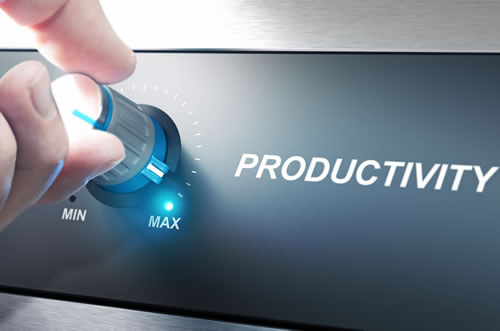The recent global health crisis has accelerated the inevitable: remote work is here to stay. It’s a shift that will lead to a more productive workforce, lower operating expenses, and a healthier business overall – if you can harness the opportunity
According to research we’ve done at my company, Prodoscore, our employee visibility software data shows a 47% productivity increase in April/May 2020 versus the same time last year, despite the coronavirus lockdown and resulting increase in working from home. Still, a Gartner poll reveals 76% of HR leaders cite the top employee complaint during the coronavirus outbreak as “concerns from managers about the productivity or engagement of their teams when remote.”
I understand what the Gartner report respondents are getting at since I hear it all the time from the companies we speak with. It begs some important questions: How do you know that your employees are on task when you don’t see what they’re doing with their time? How do you ensure that the remote workforce has the right tools to be productive?
One thing I do know from working with Prososcore is that visibility into employee productivity can help your team work smarter and, just as importantly, improve your company’s bottom line.
Follow leading indicators
In a climate of rapid change, it’s imperative to track employee productivity in real-time. You can no longer wait until the end of the quarter to measure results or perform a mid-year review to assess performance – those are lagging indicators of success. And lagging indicators, such as missed quota, can have financial consequences. Instead, focusing on leading indicators, like productivity, uncovers shortfalls or delays in time to correct them before they impact the bottom line.
Ongoing productivity monitoring is a leading indicator of success. It can reveal early signs that an employee is struggling to onboard or not tracking to the goals set, allowing you to guide them before setbacks influence results. People are one of the biggest company investments. Earlier assessment helps you more quickly identify if an individual is a good fit for the role and implement coaching strategies to set them up for success.
Now is not the time to cycle through employees. It’s painful for a company to hire new people, retrain them, onboard them, and then see no productivity for 90 days. If you can engage your talent sooner, provide a catalyst to them to produce – for their career benefit, for their commission – that helps the employee as well as the company.
Channel effort in the right direction
An employee can be working very hard, but not very effectively. You don’t want your sales team allocating too many hours chasing customer case studies or remote workers spending most of the day troubleshooting internet connections. Instead, find where productivity is being drained and remove obstacles to efficient work. A manager can help the team prioritize accounts that have the most promise, pivot marketing efforts to a new segment, or source better technology to support home-based work.
With productivity monitoring, you are not only engaging the employee, but also redirecting their efforts toward more profitable endeavors. If the focus is being placed on email activity and phone calls, but you see other account executives making progress with online networking and product demonstrations, you can steer efforts towards more effective channels – again, a win-win for everyone.
Employees need to align their time with the right priorities, versus just putting in time – working smart, not just hard. To earn commissions, you want productivity, and productivity leads to revenue. Instead of waiting 90 days to figure out what’s working well, within five or 10 days you can have visibility into the activities that will be more likely to boost the bottom line.
Reconsider office investments
You have all of these office tools, but are they actually making your employees more productive? Customer relationship management (CRM) solutions, phone services, office productivity applications, email providers, messaging platforms, data centers—the cost of maintaining these office systems can average $400 a month per employee on the low end, with little visibility on the returns. A productivity monitoring solution can show you utilization, activity and engagement across disparate tools, so you’re not wasting seats or budget.
The Prodoscore research I referenced above – which analyzed 100 million data points from approximately 30,000 U.S.-based users during March and April 2020, compared to the same period in 2019 – found that telephone calls were up 230%, CRM system activity was up 176%, email activity was up 57% and chat messages were up 9%. Conversely, document access fell 26%, while the use of calendaring apps dropped more than 22%, suggesting that fewer meetings were taking place in the remote work environment. In addition, chat applications, CRM and email, have the highest utilization in the workplace, in that order.
With the increased adoption of remote workspaces, the potential savings from reevaluating office needs also extends to large infrastructure investments like real estate. By understanding what resources and where employees need to work to be productive, you can trim unnecessary expenses accordingly. For example, one of our customers, Vonage, saved more than a million dollars a year on rent after reducing its office space with a productive remote workforce.
Time is money
Now that most of your employees are working from home, support them in making the best use of that time with proactive productivity monitoring, coaching and management. By helping employees work smarter in remote office environments, you’ll bolster their success and improve your company’s bottom line.

















Comments are closed.